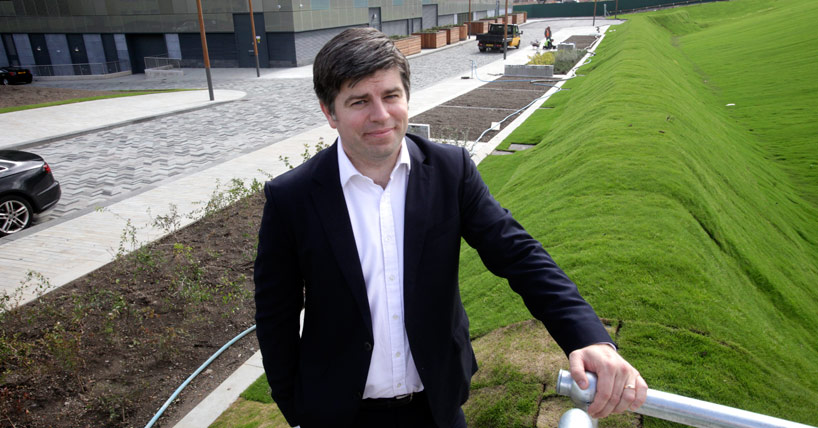Richard Dawson
Climate Change and Me
Published on: 24 May 2018
Professor Richard Dawson talks to BBC Radio 4 as part of the ‘Climate Change and Me’ series to discuss the dramatic changes to our planet that have occurred in his lifetime.
When I chose to read engineering at university, I was looking forward to understanding the practicalities of building and designing things.
Never could I imagine back then that I’d be working on projects such as moving sand on Lincolnshire beaches and examining how flooding affects emergency services. It never crossed my mind how broadly I’d have to think as a civil engineer or how important the role would be to tackling many of society’s greatest challenges including climate change.
My own work as an engineer looks at understanding the impacts of extreme weather events. It considers how to construct buildings so that our cities are more resilient to floods, droughts, and heatwaves. We’re in the business of helping us reduce greenhouse gases and other pollution from transport, energy, water, and waste infrastructure.

Impact of climate change on our infrastructure
I went to university a few years after the Rio Earth Summit of 1992. During my degree, I do not recall learning about climate change. It was only towards the end of my three years that one of my lecturers introduced the concept of environmental sustainability.
Re-reading my PhD – looking at flood defence infrastructure – climate change does get a brief mention but it was very much a sideshow.
It wasn't until my first project with the Tyndall Centre for Climate Change - a consortium of UK universities set up in 2000 to bring together researchers from the social, natural, physical sciences – that the concept of climate change started to take on real significance.
Over the last 15 years I have had the opportunity to work on a number of projects, looking at future flood risk to the whole country, understanding the impacts of climate change on our electricity and transport networks, and assessing tradeoffs and choices in the planning of future cities.
Recently I chaired the Infrastructure Section of the UK’s 2017 Climate Change Risk Assessment. This work highlighted how the country’s infrastructure is already vulnerable to extreme weather events, especially flooding, and recent events have highlighted how our increasingly interconnected infrastructure is posing new challenges for engineers.
Role of Civil Engineers
One of the biggest challenges for civil engineers is the inertia of our constructions. What, where and how we construct our buildings and infrastructure influences climate change risks and greenhouse gas emissions for decades and even centuries. Roads first laid by the Romans are still routes today. The Great Fire of London or Hurricane Sandy did not lead to London and New York being rebuilt along different lines. How then, I often get asked, is it possible to prepare for climate change?
Anybody who has visited Amsterdam recently may find it difficult to imagine that in the 1970s the Netherlands was not a haven for cyclists. Over several decades, through a multi-disciplinary combination of legislation, planning and infrastructure, cycling became safer and more appealing, now over a quarter of all journeys in the country are by bike. As engineers we need to get better at embedding this sort of ambitious, long term thinking, into everything we do.
First, we must appreciate that each building and project is a piece of a much larger jigsaw. As a society we need to figure out what our vision of the future is – what do we want the picture on that jigsaw to be? Each new construction and every refurbishment of a house, road or bridge – then becomes an opportunity to piece by piece transition towards the climate ready cities and infrastructure that will see us well into the 22nd Century.
Hear the full interview on BBC Radio 4 ‘Climate Change and Me’ at 9.45am on Friday 25th May



